MILESTONES
Every child develops at his or her own pace. The following information is meant to serve as a guide. If you are concerned about your child’s development, please consult your child’s physician or contact Therapedia, LLC at 817-562-3111 to schedule an evaluation or screening.
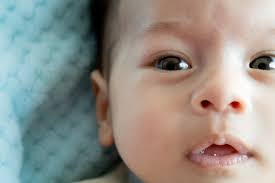

2 MONTHS
Social/Emotional
- Begins to smile at people
- Can briefly calm himself (may bring hands to mouth and suck on hand)
- Tries to look at parent
Language/Communication
- Coos, makes gurgling sounds
- Turns head toward sounds Cognitive (learning, thinking, problem-solving)
- Pays attention to faces
- Begins to follow things with eyes and recognize people at a distance
- Begins to act bored (cries, fussy) if the activity doesn’t change
Movement/Physical Development
- Can hold head up and begins to push up when lying on tummy
- Makes smoother movements with arms and legs
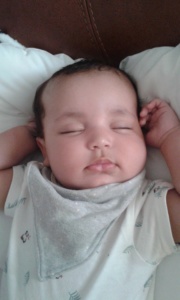

4 MONTHS
Social/Emotional
- Smiles spontaneously, especially at people
- Likes to play with people and might cry when playing stops
- Copies some movements and facial expressions, like smiling or frowning
Language/Communication
- Begins to babble
- Babbles with expression and copies sounds he hears
- Cries in different ways to show hunger, pain, or being tired
Cognitive (learning, thinking, problem-solving)
- Lets you know if she is happy or sad
- Responds to affection
- Reaches for a toy with one hand
- Uses hands and eyes together, such as seeing a toy and reaching for it
- Follows moving things with eyes from side to side
- Watches faces closely
- Recognizes familiar people and things at a distance
Movement/Physical Development
- Holds head steady, unsupported
- Pushes down on legs when feet are on a hard surface
- May be able to roll over from tummy to back
- Can hold a toy and shake it and swing at dangling toys
- Brings hands to mouth
- When lying on stomach, pushes up to elbows
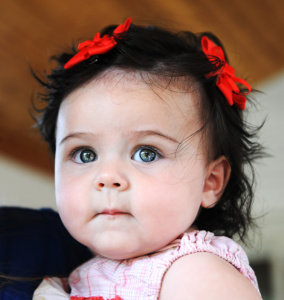

6 MONTHS
Social/Emotional
- Knows familiar faces and begins to know if someone is a stranger
- Likes to play with others, especially parents
- Responds to other people’s emotions and often seems happy
- Likes to look at self in a mirror
Language/Communication
- Responds to sounds by making sounds
- Strings vowels together when babbling (“ah,” “eh,” “oh”) and likes taking turns with parent while making sounds
- Responds to own name
- Makes sounds to show joy and displeasure
- Begins to say consonant sounds (jabbering with “m,” “b”)
Cognitive (learning, thinking, problem-solving)
- Looks around at things nearby
- Brings things to mouth
- Shows curiosity about things and tries to get things that are out of reach
- Begins to pass things from one hand to the other
Movement/Physical Development
- Rolls over in both directions (front to back, back to front)
- Begins to sit without support
- When standing, supports weight on legs and might bounce
- Rocks back and forth, sometimes crawling backward before moving forward
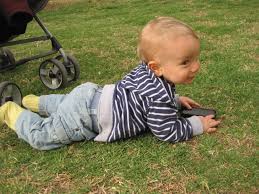

9 MONTHS
Social/Emotional
- May be afraid of strangers
- May be clingy with familiar adults
- Has favorite toys
Language/Communication
- Understands “no”
- Makes a lot of different sounds like “mamamama” and “bababababa”
- Copies sounds and gestures of others
- Uses fingers to point at things
Cognitive (learning, thinking, problem-solving)
- Watches the path of something as it falls
- Looks for things he sees you hide
- Plays peek-a-boo
- Puts things in her mouth
- Moves things smoothly from one hand to the other
- Picks up things like cereal o’s between thumb and index finger
Movement/Physical Development
- Stands, holding on
- Can get into sitting position
- Sits without support
- Pulls to stand
- Crawls
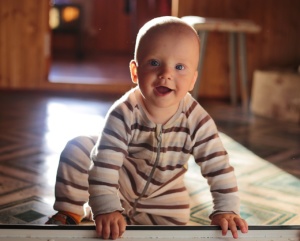

1 YEAR OLD
Social/Emotional
- Is shy or nervous with strangers
- Cries when mom or dad leaves
- Has favorite things and people
- Shows fear in some situations
- Hands you a book when he wants to hear a story
- Repeats sounds or actions to get attention
- Puts out arm or leg to help with dressing
- Plays games such as “peek-a-boo” and “pat-a-cake”
Language/Communication
- Responds to simple spoken requests
- Uses simple gestures, like shaking head “no” or waving “bye-bye”
- Makes sounds with changes in tone (sounds more like speech)
- Says “mama” and “dada” and exclamations like “uh-oh!”
- Tries to say words you say
Cognitive (learning, thinking, problem-solving)
- Explores things in different ways, like shaking, banging, throwing
- Finds hidden things easily
- Looks at the right picture or thing when it’s named
- Copies gestures
- Starts to use things correctly; for example, drinks from a cup, brushes hair
- Bangs two things together
- Puts things in a container, takes things out of a container
- Lets things go without help
- Pokes with index (pointer) finger
- Follows simple directions like “pick up the toy”
Movement/Physical Development
- Gets to a sitting position without help
- Pulls up to stand, walks holding on to furniture (“cruising”)
- May take a few steps without holding on (expected age for walking 11-15 months)
- May stand alone
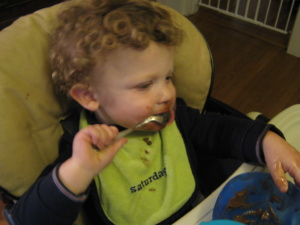

18 MONTHS
Social/Emotional
- Likes to hand things to others as play
- May have temper tantrums
- May be afraid of strangers
- Shows affection to familiar people
- Plays simple pretend, such as feeding a doll
- May cling to caregivers in new situations
- Points to show others something interesting
- Explores alone but with a parent close by
Language/Communication
- Says several single words
- Says and shakes head “no”
- Points to show someone what he wants
Cognitive (learning, thinking, problem-solving)
- Knows what ordinary things are for; for example, telephone, brush, spoon
- Points to get the attention of others
- Shows interest in a doll or stuffed animal by pretending to feed
- Points to one body part
- Scribbles on his own
- Can follow 1-step verbal commands without any gestures; for example, sits when you say “sit down”
Movement/Physical Development
- Walks alone
- May walk up steps and run
- Pulls toys while walking
- Can help undress herself
- Drinks from a cup
- Eats with a spoon
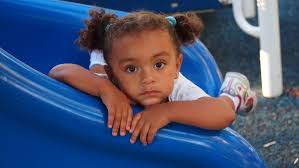

2 YEARS OLD
Social/Emotional
- Copies others, especially adults and older children
- Gets excited when with other children
- Shows more and more independence
- Shows defiant behavior (doing what he has been told not to)
- Plays mainly beside other children, but is beginning to include other children, such as in chase games
Language/Communication
- Points to things or pictures when they are named
- Knows names of familiar people and body parts
- Says sentences with 2 to 4 words
- Follows simple instructions
- Repeats words overheard in conversation
- Points to things in a book
Cognitive (learning, thinking, problem-solving)
- Finds things even when hidden under two or three covers
- Begins to sort shapes and colors
- Completes sentences and rhymes in familiar books
- Plays simple make-believe games
- Builds towers of 4 or more blocks
- Might use one hand more than the other
- Follows two-step instructions such as “Pick up your shoes and put them in the closet.”
- Names items in a picture book such as a cat, bird, or dog
Movement/Physical Development
- Stands on tiptoe
- Kicks a ball
- Begins to run
- Climbs onto and down from furniture without help
- Walks up and down stairs holding on
- Throws ball overhand
- Makes or copies straight lines and circles
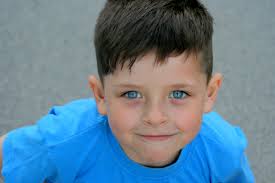

3 YEARS OLD
Social/Emotional
- Copies adults and friends
- Shows affection for friends without prompting
- Takes turns in games
- Shows concern for a crying friend
- Understands the idea of “mine” and “his” or “hers”
- Shows a wide range of emotions
- Separates easily from mom and dad
- May get upset with major changes in routine
- Dresses and undresses self
Language/Communication
- Follows instructions with 2 or 3 steps
- Can name most familiar things
- Understands words like “in,” “on,” and “under”
- Says their first name, age, and sex
- Names a friend
- Says words like “I,” “me,” “we,” and “you” and some plurals (cars, dogs, cats)
- Talks well enough for strangers to understand most of the time
- Carries on a conversation using 2 to 3 sentences
Cognitive (learning, thinking, problem-solving)
- Can work toys with buttons, levers, and moving parts
- Plays make-believe with dolls, animals, and people
- Does puzzles with 3 or 4 pieces
- Understands what “two” means
- Copies a circle with a pencil or crayon
- Turns book pages one at a time
- Builds towers of more than 6 blocks
- Screws and unscrews jar lids or turns the door handle
Movement/Physical Development
- Climbs well
- Runs easily
- Pedals a tricycle (3-wheel bike)
- Walks up and down the stairs, one foot on each step
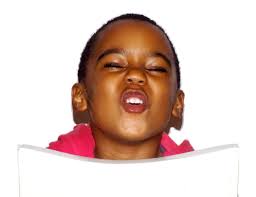

4 YEARS OLD
Social/Emotional
- Enjoys doing new things
- Plays “Mom” and “Dad”
- Is more and more creative with make-believe play
- Would rather play with other children than by himself
- Cooperates with other children
- Often can’t tell what’s real and what’s make-believe
- Talks about what she likes and what she is interested in
Language/Communication
- Knows some basic rules of grammar, such as correctly using “he” and “she”
- Sings a song or says a poem from memory such as the “Itsy Bitsy Spider” or the “Wheels on the Bus”
- Tells stories
- Can say first and last name
Cognitive (learning, thinking, problem-solving)
- Names some colors and some numbers
- Understands the idea of counting
- Starts to understand time
- Remembers parts of a story
- Understands the idea of “same” and “different”
- Draws a person with 2 to 4 body parts
- Uses scissorsStarts to copy some capital letters
- Plays board or card games
- Tells you what he thinks is going to happen next in a book
Movement/Physical Development
- Hops and stands on one foot up to 2 seconds
- Catches a bounced ball most of the time
- Pours, cuts with supervision and mashes own food
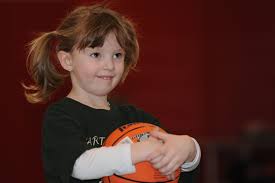

5 YEARS OLD
Social/Emotional
- Wants to please friends
- Wants to be like friends
- More likely to agree with rules
- Likes to sing, dance, and act
- Is aware of gender
- Can tell what’s real and what’s make-believe
- Shows more independence (for example, may visit a next-door neighbor by himself [adult supervision is still needed])
- Is sometimes demanding and sometimes very cooperative
Language/Communication
- Speaks very clearly
- Tells a simple story using full sentences
- Uses future tense; for example, “Grandma will be here.”
- Says name and address
Cognitive (learning, thinking, problem-solving)
- Counts 10 or more things
- Can draw a person with at least 6 body parts
- Can print some letters or numbers
- Copies a triangle and other geometric shapes
- Knows about things used every day, like money and food
Movement/Physical Development
- Stands on one foot for 10 seconds or longer
- Hops; may be able to skip
- Can do a somersault
- Uses a fork and spoon and sometimes a table knife
- Can use the toilet on her own
- Swings and climbs
